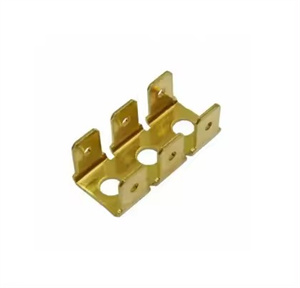Heat Treatment Of High Precision Stamping
High Precision Stamping is a stamping process that requires high precision and control, used to manufacture metal parts with complex shapes and strict dimensional requirements. In this process, tempering is an important heat treatment step used to improve the mechanical properties of materials, such as hardness, toughness, strength, and wear resistance.
The tempering temperature has a significant impact on the performance of High Precision Stamping. Choosing the appropriate tempering temperature can ensure that the parts maintain the required hardness while also having good toughness and durability. The following are some considerations regarding the tempering temperature of high-precision stamped parts:
Material type: Different High Precision Stamping has different tempering temperature ranges. For example, materials such as carbon steel, stainless steel, and alloy steel have different tempering temperatures. Understanding the materials used and their characteristics is crucial for selecting the appropriate tempering temperature.
Hardness requirements: High Precision Stamping typically requires a certain level of hardness to maintain its shape and dimensional stability. However, excessive hardness may lead to increased brittleness of the parts, thereby reducing their toughness. Therefore, when choosing the tempering temperature, it is necessary to balance the balance between hardness and toughness.
Resilience requirement: High Precision Stamping typically requires good resilience to cope with complex work environments. By selecting the appropriate tempering temperature, the toughness of the material can be optimized to adapt to various stresses and impacts.
Dimensional stability: High Precision Stamping has high requirements for dimensional stability. Proper tempering treatment can reduce internal stress and deformation during the quenching process, thereby improving the dimensional stability of the parts.
When selecting the tempering temperature, a series of experiments and tests are usually required to determine the optimal tempering temperature range. These tests may include hardness testing, tensile testing, impact testing, etc. to evaluate the performance of parts at different tempering temperatures.
In addition, it is also necessary to pay attention to the influence of process parameters such as tempering time and cooling speed on the performance of the parts. Appropriate tempering time and cooling rate can ensure a uniform performance distribution of the parts during the tempering process.
